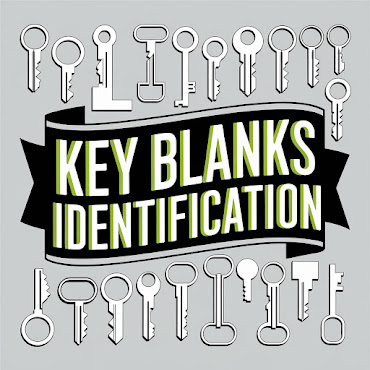The Ultimate Guide to Key Blank Identification: Tools, Tips & Best Practices
For locksmiths, security professionals, and even DIY enthusiasts, identifying the right key blank is crucial for accurate key cutting. Using a key blank identifier can help determine the exact key type, saving time and ensuring precision. In this guide, we will cover everything you need to know about key blank identification, including the best tools, charts, and cross-reference guides to streamline the process.
Why Key Blank Identification Matters
Choosing the wrong key blank can lead to misfits, security issues, and wasted materials. Proper key blank identification ensures:
- Accurate key duplication
- Increased efficiency for locksmiths
- Better security and access control
- Cost savings by reducing errors
Best Tools for Key Blank Identification
With advancements in technology, locksmiths now have multiple options for identifying key blanks efficiently. Here are the top key blank identifier tools in 2025:
1. Key Blank Identifier Charts and Guides
- A key blank identification chart for beginners is an excellent starting point for those new to the trade.
- A key blank cross-reference guide for locksmiths helps match key blanks from different manufacturers, avoiding confusion.
- Many professional locksmiths use a universal key blank identification system to quickly match keys to their correct blank.
2. Digital Key Blank Lookup Tools
- An online key blank identifier for home and car keys allows locksmiths to search for key blanks instantly.
- The IdeniKey App is a revolutionary tool that provides a step-by-step guide to finding the right key blank using a simple scan or search.
3. Handheld Key Blank Identifiers
- Traditional key blank comparison charts remain a staple for many locksmiths.
- Advanced key blank lookup tools integrate barcode scanning and image recognition to streamline the identification process.
How to Use a Key Blank Identifier Correctly
Using a key blank identifier tool for automotive keys, house keys, and commercial locks can be easy when you follow these steps:
- Examine the Key's Profile – Look at the shape, grooves, and markings.
- Compare with a Key Blank Chart – Match the key against a key blank identification chart.
- Use a Key Blank Lookup Tool – If unsure, enter details into an online key blank identifier like IdeniKey App.
- Cross-Reference with Manufacturer Guides – Check the key blank cross-reference guide for exact matches.
- Test the Key Blank – If available, try a test cut before making the final copy.
Choosing the Right Key Blank for Your Needs
Key blanks vary depending on the lock brand, security level, and intended use. Here are some common categories:
- Residential Keys – Schlage, Kwikset, and Yale keys often require specific key blanks.
- Automotive Keys – Use a key blank identifier tool for automotive keys to match brands like Ford, GM, and Toyota.
- Commercial Keys – Office buildings and high-security locks may have restricted key blanks.
- Specialty Keys – Safe deposit boxes, vending machines, and antique locks require unique key blanks.
Where to Buy the Best Key Blank Identifier Tools
For locksmiths and businesses looking for high-quality key blank identifier tools, CLK Supplies offers an extensive selection of key blanks, key machines, and key identification systems. Their IdeniKey App is an industry-leading tool for quick and accurate key blank identification.
Conclusion
Using a key blank identifier effectively is essential for locksmiths and security professionals. Whether you prefer manual key blank charts, online key blank lookup tools, or digital apps like IdeniKey, choosing the right tools ensures efficiency, accuracy, and better customer service. For the best selection of key blanks and locksmith tools, visit CLK Supplies today!

Comments
Post a Comment